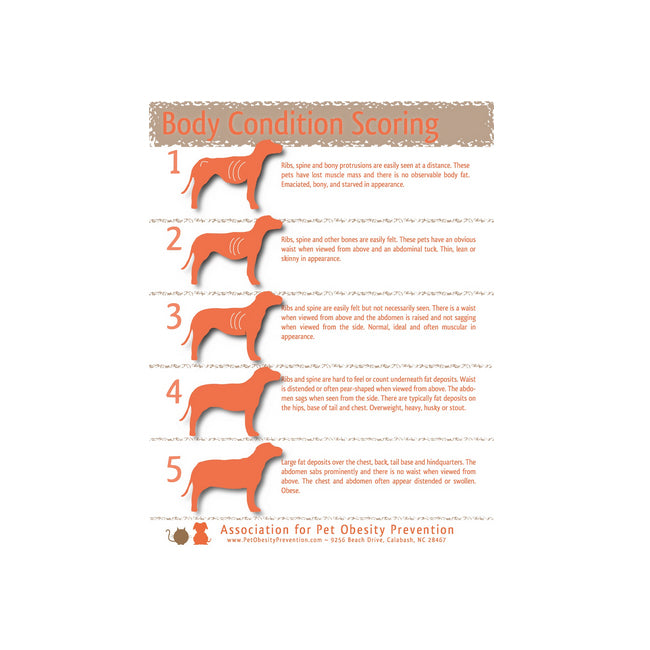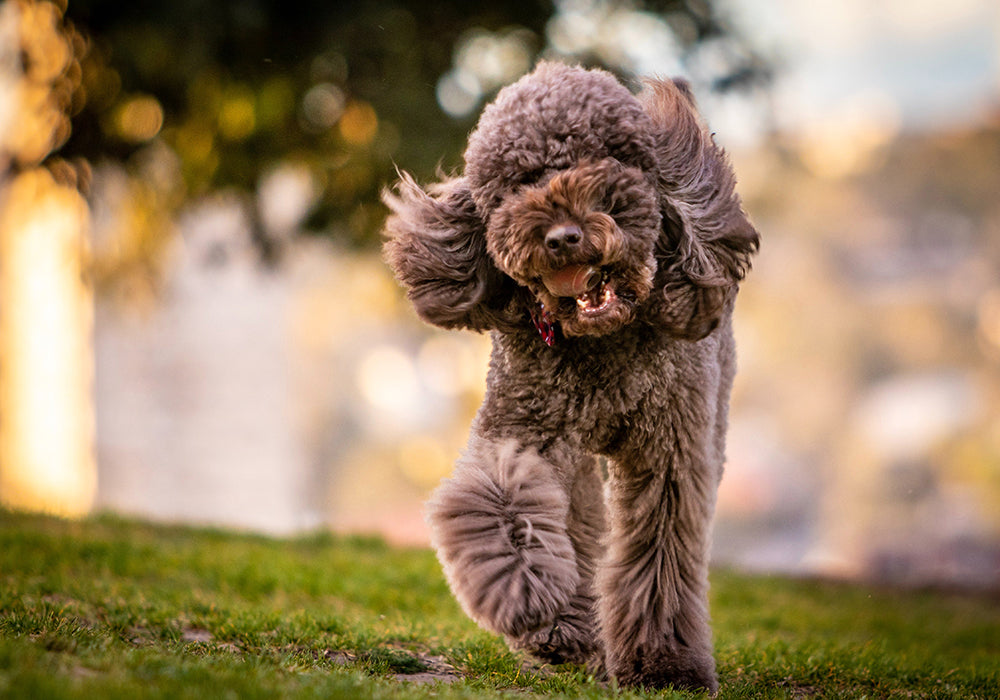Last week we discussed the dangers of pet obesity, and ways that we as pet owners can reduce the risk of dog illness and disease by ensuring our pets maintain a healthy body weight. Many of you responded by asking, “Well, how do I know if my dog is overweight?” This is actually a very important question – one that EVERY pet owner should ask themselves, because even one pound of excess body weight on a dog can lead to health problems down the road. If a Chihuahua were to gain just one extra pound, it would equate to twenty (20) lbs. of excess body weight on an adult woman!
As pet owners become increasingly concerned over the weight of their dogs, questions begin to arise regarding calorie levels and whether to feed special, weight-control dog food…and pet food manufacturers have taken notice. Walk down the aisles of your local pet food store and you’ll see diets touting low, reduced calorie formulas, prescription diets formulated for weight loss, and diets for overweight management.
What I am about to say next may cause an uproar in the veterinarian and breeding communities but it needs to be said: dog feeding guidelines are, for the most part, worthless. The plain and simple truth is that every dog is different and that there are many variables that need to be considered before deciding on what the proper amount of food to feed your dog is, for instance:
However, the most important thing to consider when attempting to achieve dog weight loss is to analyze the quality and source of the calories being consumed by your pet. For one thing, calories from starches and sugars cause much more weight gain than calories from protein or fat. Food processing also plays a huge role in weight issues in dogs. Despite the identical caloric calculation, cooked or extruded foods (i.e. canned and kibble pet foods) differ in their levels of metabolizabled calories. Those same ingredients, if left in their uncooked, unadulterated, natural state, provide better nutrition and better utilized calories for your pet, maintaining optimum weight and health. To get a better idea of what your dog’s weight should be, take a look at the canine body condition scoring chart below:

If you find that your pet is overweight (or underweight), give my office a call for a complimentary nutritional assessment for your pet: 1-866-282-BARF (2273). You might want to consider a health consultation with a holistic veterinarian to determine whether there may be an underlying issue that is causing abnormal weight issues in your pet.
Obesity in dogs and cats has become an alarming problem in America and throughout the world. A 2012 survey conducted by the Association for Pet Obesity revealed that 52.5% of dogs and 58.3% of cats seen by veterinarians across the country are considered overweight or obese. This ever-increasing health epidemic can lead to serious health disorders, including diabetes and cancer.
The physical effect of carrying excess body weight contributes to a rapid deterioration of joints and often promotes hip, joint, and mobility problems, such as arthritis. As additional weight puts stress on the already weak joints, your pet will begin to slow down, reducing their amount of daily exercise, which further perpetuates the vicious cycle of obesity. Excess weight also puts a strain on the circulatory system, which in turn stresses out the heart, leading to pulmonary and cardiovascular disease down the road.
So what is causing all the pet obesity in this country and why do the numbers continue to rise?
The underlying cause of obesity in dogs and cats is a simple imbalance between energy intake (food) and energy expenditure (exercise), which results in an energy surplus (fat) or weight gain. This sounds like an easy problem to resolve, but there are many underlying factors that need to be considered. Some of these factors include:
While proper breeding practices can help minimize the risk of some of these factors, there are a few things that we as pet owners can do to eliminate some of the risk factors that contribute to obesity in pets.
Many of today’s pre-packaged, processed, commercial pet foods are loaded with grains, fillers, preservatives, and other inferior quality ingredients. These formulations contain an overabundance of carbohydrates and low-quality proteins, which are hard for our pets to digest. Foods such as these do not offer our pets the necessary amount of nutrients needed for optimum health and development. As a result they are constantly “hungry” and have to eat more of this “junk food” than necessary in order to feel “nutritionally satisfied.”
A much better choice is a raw food diet like the BARF® Diet. One of the advantages of raw diets for dogs and cats, is the high level of nutrition they receive compared to cooked, kibble, or canned pet foods. A raw fed dog or cat will noticeably consume less raw food than pets fed a dry, canned or moist food diet yet they will utilize a higher percentage of nutrients even with less quantity intake. This is the food that nature intended for your pet.
Regular exercise is the second part of keeping your pet in shape. Once you begin feeding a raw diet, you will notice an appreciable difference in the energy level of your pet. The BARF (biologically appropriate raw food) diet, being high in protein and low in carbohydrates, promotes a trim, toned body and gives your pet the energy required for increased exercise and activity. “My dog acts like a puppy again,” is something we often hear from our ecstatic clients. Like, Claudia Hetzer from San Diego, California:
“Our dog, Captain, a 85-pound lab retriever, was eight when we switched him to the BARF World diet. Already after the first few weeks, he seemed invigorated, more energetic and his joint stiffness (arthritis) improved markedly. Now he chases the ball around like a puppy, his coat looks wonderful, he barely sheds and is overall a happier and healthier dog. We will never feed him anything else.”
A natural, raw diet and regular exercise will help prevent obesity and extend the life of your pet. These two simple health recommendations – a wholesome and nutritious diet, and daily exercise, are the same suggestions that we as humans hear from medical and nutritional experts on a regular basis.
Take care of yourself and take care of your pet. You will be amazed at how well you and your pet look and feel when you both eat properly and take a walk every day.
Now that you understand our products’ ingredients, let your pet try them. Shop through the best raw dog food available and give your pet nutrients to support their bodies and minds.




